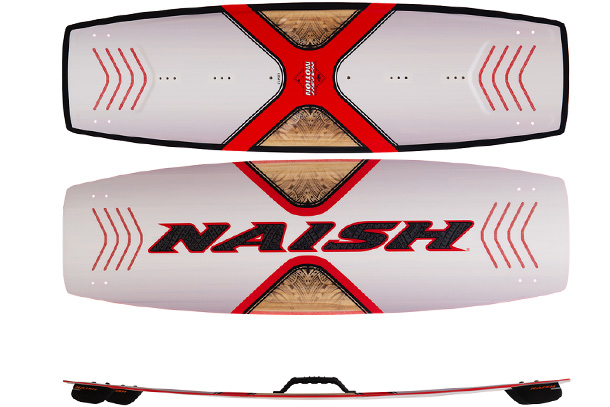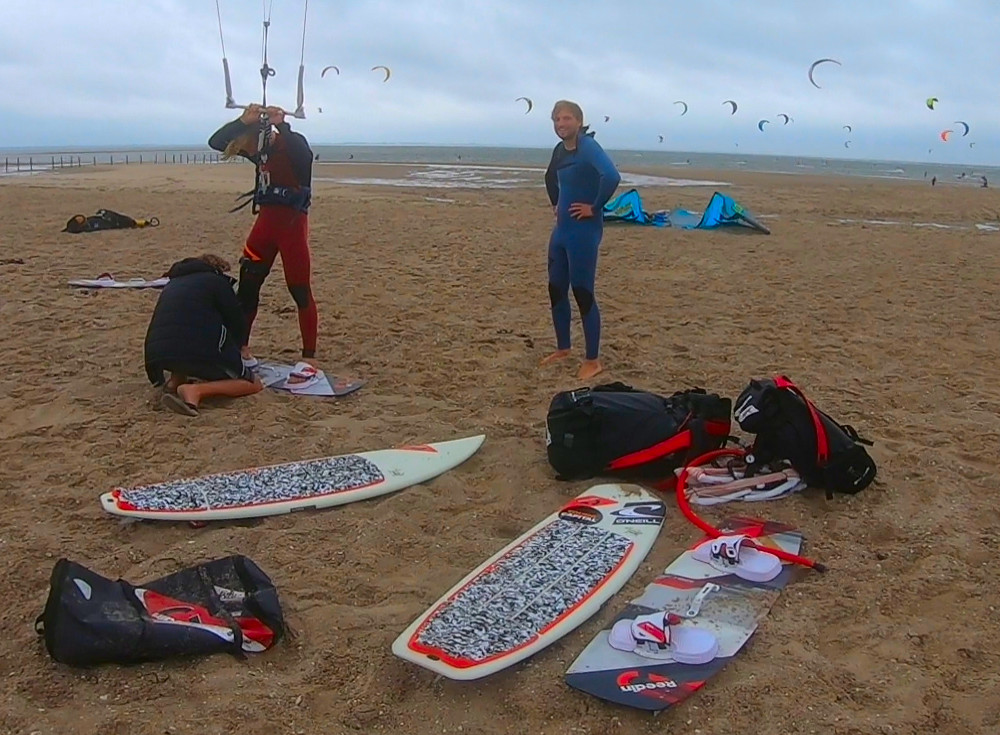In this manual kitesurfing article we answer the question which size kiteboard is suitable for you. Although this question is often asked by beginners, this information also provides good reference information for any kite surfer. Net as with kites there are many different kiteboards. Each with its own details that suit the sailing style of a kitesurfer.
Size chart which size kiteboard
Below we first answer the frequently asked question: "What size kiteboard do I need?" This way you know at a glance which size kiteboard suits your weight via the kiteboard size chart. After the size chart, read on about the details and rules of thumb that are also important to think about when determining which size kiteboard suits you.
| Weight kite surfer (kg) | Length kiteboard (cm) | Width kiteboard (cm) |
|---|---|---|
| 100 + kilo | 144 + cm | 46 cm |
| 85-100 kilos | 139 cm | 41,5 cm |
| 70-85 kilos | 136 cm | 41 cm |
| 65-70 kilos | 133 cm | 40,5 cm |
| 40-55 kilos | 130 cm | 39 cm |
Pay attention. This is a general and indicative overview. This table is based on a novice to intermediate level kitesurfer with a standard freeride twintip kiteboard. So an all-round kiteboard. We explain more about the background of the size chart below so that you can make an even better decision. For example, based on your foot size.
Freeride twintip as a starting point
Twintip kiteboards are by far the most used kiteboards. As you can see, a twin tip is a kiteboard that you can sail both to the left and to the right. You also don't have to get out of your foot straps if you want to change course. You don't have to turn a twin tip kiteboard if you want to change course. For example, a twin tip offers a lot of convenience compared to surf / wave style kitesurf boards and also a lot of freedom. That is why we take this type of kiteboard as a starting point. After all, 99% will start on a freeride twintip kiteboard. You can find more information about twin tip kiteboards on our kiteboard page.
A freeride twin tip kiteboard is everyone's friend. For fun sessions to participate in whatever you feel like at that moment.

Rules of thumb which size kiteboard
- Your weight is a determining factor: the heavier you are, the bigger your kiteboard.
- A longer kiteboard helps you get started faster than a shorter kiteboard.
- When kitesurfing with a shorter and flatter kiteboard, the nose dives under water faster. This is especially the case with taller kite surfers with a kiteboard that is too short.
- The flatter and wider your kiteboard, the faster you get going and the faster your height is.
- On the coast the wind often blows a little harder and more stable than on inland waterways. That is why a slightly larger kiteboard is nicer on inland water. This prevents you from always threatening to come to a standstill when the wind disappears for a moment.
- With larger fins, for example 5 cm. high, you have more grip on the water. This makes a kiteboard less playful, but can make all the difference to kitesurfing with little wind.
Tipping point rules of thumb
The mentioned rules of thumb also have a tipping point where they lose their advantages. For example if the wind blows harder. Then you can give less counter pressure and slow down with a large and wide kiteboard. This is the time to release a smaller kite or grab a smaller kiteboard. So you see that the length and width of a kiteboard matter.
Kiteboard ladies and children
Kite surfers with a smaller foot as well as ladies and children with a small foot size prefer a less wide kiteboard. This way they can also place the foot straps in such a way that the heel side is more against the edge of the kiteboard. This helps them to be able to put good pressure on the edges, but also to be able to make turns and kite surfing toeside. A ladies kiteboard and / or kiteboard for children is often more flexible than a normal kiteboard. With less weight and a smaller foot size, a flexible kiteboard is easier to control.

Foot strap adjustment is crucial
Correctly adjusting the foot straps can make a world of difference when using the kiteboard. An incorrectly placed foot strap can even cause serious injuries. The adjustment of a kiteboard binding is also not universal. There are of course principles, but your own anatomy also plays an important role. In the article 'Foot straps kiteboard'we explain everything about it so that you can adjust your foot straps perfectly.
You can find more about kiteboards, the different sailing styles and advice on which size kiteboard suits them kiteboard page.



